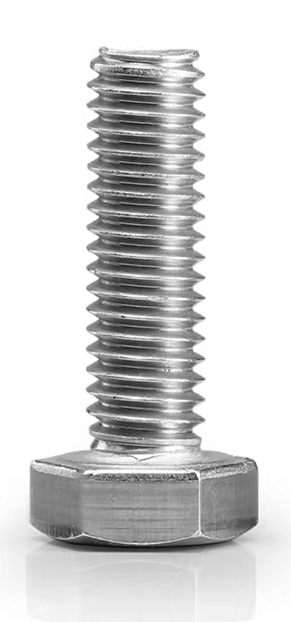Hex bolts are a staple in the fastener industry, known for their high torque, simplicity, cost-effectiveness, and performance. Widely utilized in the automotive sector, these hexagon bolts come in two primary variants: outer hexagon bolts and inner hexagon bolts. Understanding the distinctions between these two types is crucial for selecting the most appropriate option for specific applications.

Structural Variances Between Outer and Inner Hexagon Bolts
Structurally, distinguishing between outer and inner hexagon bolts is straightforward. The thread part remains largely uniform, while the outer hexagon features a hexagonal head without any depression. To enhance the pressure-bearing area of the head, outer hexagon flange bolts are also common. Conversely, inner hexagon bolts exhibit a round head with a concave hexagon in the middle. Different variations include cylindrical head, pan head, countersunk head, and flat head hexagon socket bolts.
Cost Disparities in Head Manufacturing
A significant difference lies in the manufacturing process of the head. Due to distinct head structures, varying molds and processes are required. Consequently, the head manufacturing cost for hexagonal socket bolts is higher than that of outer hexagon bolts.
Varied Tightening Tools for Different Bolts
In practical assembly scenarios, inner hexagon bolts typically use an "L"-shaped wrench, where one side is longer for ease of use. On the other hand, outer hexagon bolts are tightened with a wrench shaped like an equilateral hexagon.
For production assembly, adherence to tightening quality and automation necessitates the use of constant torque wrenches and high-precision tightening guns. Matching corresponding tightening sleeves becomes crucial in this context, with outer hexagon bolts requiring concave hexagon sleeves and inner hexagon bolts necessitating convex hexagon sleeves.

Advantages and Disadvantages of Outer and Inner Hexagon Bolts
Outer Hexagon Bolts:
Advantages:
Good self-locking capabilities.
Large pre-tightening contact area and force.
Wider range of full thread lengths.
Suitable for reamed holes, fixing part positions, and withstanding shear forces.
Disadvantages:
Takes up more space and isn't ideal for delicate applications.
Not suitable for countersunk heads.
Inner Hexagon Bolts:
Advantages:
Easy to fasten.
Difficult to disassemble.
Ideal for small spaces.
Can be countersunk for a more aesthetic appearance.
Disadvantages:
Small contact area and pre-tightening force.
Limited full thread length.
Fastening tools may be challenging to match and replace.
Requires a professional wrench for disassembly, making it less convenient.

Choosing Between Outer and Inner Hexagon Bolts in Different Applications
The selection between outer and inner hexagon bolts depends on the application's specific requirements. If a large axial force is needed, and external space permits, outer hexagon bolts are preferable. Conversely, for applications with limited space, aesthetic considerations, and lower axial force requirements, inner hexagon bolts are more suitable.
Consider a car's subframe-to-body connection as an example. Here, outer hexagon bolts are chosen due to the ample space, high axial force, and torque requirements. Conversely, in visible areas with aesthetic requirements, such as interior trim parts, inner hexagon bolts are the ideal choice.
Conclusion
In conclusion, how to choose between outer and inner hexagon bolts involves understanding their structural differences, cost implications, advantages, and disadvantages. Manufacturers should carefully assess specific application requirements to make informed decisions that align with efficiency, aesthetics, and functionality.

